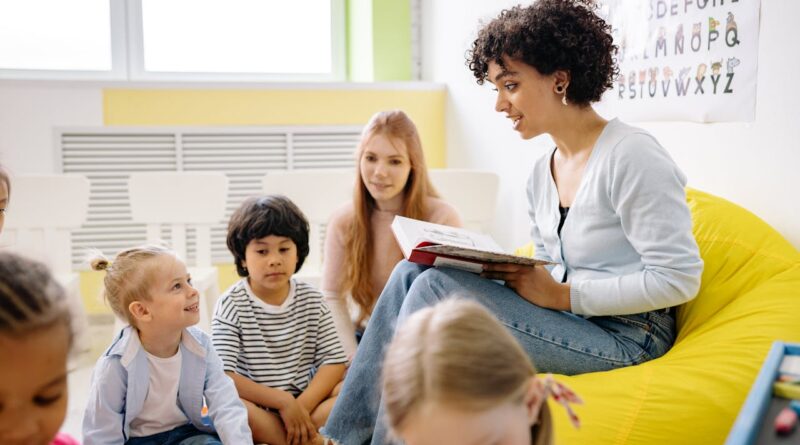Tips & Strategies to Help Students With SEND Feel Like They Belong
School should be a place where every student can feel that they are wanted and needed in that institution. However, this has not always been the case, especially for students with disabilities. Many years ago, the education system marginalised these students, making them mere spectators in their learning process.
The process of establishing a supportive school community that embraces students with learning or developmental disabilities implies going beyond simple integration of children into community practices. It is about making a space where every child, particularly kids who have been rejected or pushed out, can form a core level of attachment.
This journey begins with students with disabilities being able to access the same facilities as the other children. From there, the goal is to make them feel not just accepted but welcomed, wanted and needed as friends and members of the community – because belonging is about being seen, wanted and loved.
1. Learn the Difference Between Inclusion and Belonging
It simply means that for inclusion and belonging to be properly understood, it is necessary to know that they are not the same thing. Inclusion aims at having students with disability attend classes and participate in activities. Belonging, on the other hand, is about establishing positive rapport and relationships which have students feel accepted and have a place to be.
However, belonging is not just about participation it is also about ensuring that all students are eager to attend school and willing to interact with peers. Students who feel that they are accepted as they are are more willing, confident and ready to learn with other students. It is this feeling that assists in making the transition from having inclusion to something bigger and more meaningful.
2. Embrace Universal Design for Learning (UDL)
The best model for instructing all students – those with or without disabilities – is the Universal Design for Learning model. It’s about providing students with options in how they can learn and how they can demonstrate their learning. UDL understands that every learner is unique and should be provided with options and opportunities throughout learning.
The use of the principles of UDL makes it easy to design lessons and activities that will be useful for all students. Not only does this help students with disabilities, but it also benefits each learner in the classroom making it better for everyone.
3. Build Awareness and Celebrate Disability Culture
Disability awareness is about understanding and appreciating the experiences, contributions, and perspectives of people with disabilities. It means challenging outdated stereotypes, breaking down stigma, and promoting a culture of respect and acceptance.
Educators can foster disability awareness by integrating disability-related topics into the curriculum, inviting guest speakers or mentors with disabilities, and encouraging meaningful interactions between students with and without disabilities. These efforts not only celebrate diversity but also help build a school culture where everyone feels valued and empowered.
4. Listen to Students’ Experiences
Understanding how students with Special Education Needs and Disabilities (SEND) feel about their sense of belonging starts with asking them directly. One-on-one conversations or focus groups can provide valuable insights into what’s working well and where students might feel excluded. Questions can explore their favourite aspects of school life as well as moments when they feel disconnected from their peers.
For students with disabilities who may struggle with verbal communication, observation can be a helpful alternative. Pay attention to their body language, facial expressions, or overall demeanour, especially when they arrive at school—these subtle cues can reveal how comfortable and enthusiastic they are about being there.
5. Use Data to Guide Decisions
Even personal observations are important, there is more information to look at for an overall view of how a school assists students with disabilities. Some of the examples are; the percentage of students attending general education classrooms, involvement and attendance in co-curricular activities, or membership and participation in clubs and volunteering activities among others.
This data is useful for understanding where there are gaps and where changes have been made for better or worse. Therefore, when setting such indicators, schools can determine how effectively they are promoting student belongingness, especially for students with a disability.
6. Promote Peer Support and Connection
Networking and pairing programs with mentors also can help students with disabilities immensely. In this way, by putting students together with fellowship-mates with or without disabilities, they can get mentorship, and company and feel that they belong to the community.
These may develop informally or through structured settings such as membership in clubs, events or support groups. Peer mentoring also increases self-esteem and social interaction for students with SEND as well as promotes understanding and acceptance among the other learners. It is mutually beneficial to everyone involved.
7. Provide Accommodations and Support Services
Such measures and services are important as they help provide equal opportunities to students with disabilities. These accommodations – such as extra time on examinations, notes, or assistive technology – make it possible for children with learning disabilities to do their best in school.
The idea here is that these supports should be individualised to the student’s needs, which must involve students, teachers, and disability support services. Removing barriers as well as offering accommodations leads not only to meeting academic success but also to helping students achieve success in the classroom and life.
8. Encourage Self-Advocacy and Empowerment
Enabling students with disabilities to be responsible for themselves is very important. This is important because, as students learn to get their needs met, know their rights, and take control of their education, they get empowered.
This can be done with such things as educating them on disability policies, laws and avenues and going with them for feedback, bargaining and fighting the system. Mastery-oriented students are in a better position to be in the driver’s seat and focus on their achievement with tenacity.
9. Prioritize Belonging as Much as Academics
Of course, belonging is not an option – it is, in fact, one of the essential processes through which students succeed. Studies confirm the idea that students, including disabled students, achieve higher results if they are accepted within a school.
For this to happen, educators and school leaders are required to consider belonging as important as academic success. To be specific, it takes time and effort to build a climate that would help every learner feel connected and valued. A related advantage is that when belonging is valued, the welfare of the total school fraternity is enhanced, and no kid gets neglected.




